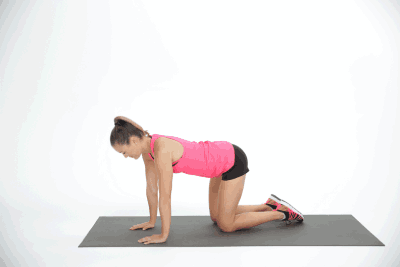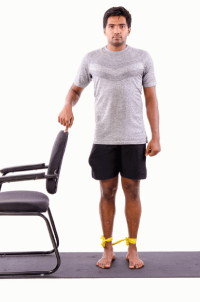You wake up, plant your feet on the ground, and wince at the familiar heel pain. As the day progresses, a nagging discomfort in your hip adds to your woes. It’s not just an unfortunate coincidence; there’s a deeper connection between your plantar fasciitis and that burgeoning hip pain. For many, the correlation between these two discomforts remains a mystery, often overlooked up to age or overexertion. But what if these seemingly disparate pains were interlaced in ways you hadn’t considered? If you’re craving to not only understand the intricate link but also to find solace from these pains, journey with us as we unravel the connection and guide you towards a path of relief.
Contents
Understanding Plantar Fasciitis
 Plantar fasciitis, at its core, is an inflammation of the plantar fascia—a thick band of tissue that runs along the bottom of your foot, connecting the heel bone to your toes. This condition is often the unseen adversary behind that stabbing pain you feel, primarily during your first steps in the morning or after prolonged periods of rest.
Plantar fasciitis, at its core, is an inflammation of the plantar fascia—a thick band of tissue that runs along the bottom of your foot, connecting the heel bone to your toes. This condition is often the unseen adversary behind that stabbing pain you feel, primarily during your first steps in the morning or after prolonged periods of rest.
Common Symptoms Include:
- A sharp, stabbing pain near the heel.
- Discomfort that’s typically worse upon waking or after long stints of sitting or standing.
- Pain that lessens as you move but might return after extended periods of standing.
While it’s essential to grasp the basics of plantar fasciitis, the intricate web connecting it to hip pain warrants equal, if not more, attention.
Can Plantar Fasciitis Cause Hip Pain?
 At first glance, the foot and the hip might seem like isolated entities, operating in their own realms. However, in the grand scheme of our body’s biomechanics, they’re intimately linked, forming parts of a kinetic chain—a series of interconnected segments and joints that move and react in response to one another. So, when one link is affected, it can set off a domino effect throughout the chain.
At first glance, the foot and the hip might seem like isolated entities, operating in their own realms. However, in the grand scheme of our body’s biomechanics, they’re intimately linked, forming parts of a kinetic chain—a series of interconnected segments and joints that move and react in response to one another. So, when one link is affected, it can set off a domino effect throughout the chain.
Plantar fasciitis, primarily being a foot ailment, can become the proverbial “pebble in the pond,” sending ripples throughout your body. Here’s how:
- Altered Gait: When the foot experiences pain, our natural response is to adjust our walking pattern to minimize discomfort. This altered gait can stress different muscles and joints, potentially leading to imbalances in the hip.
- Compensatory Mechanisms: To avoid pain in the heel, you might inadvertently shift your weight more to one side. This asymmetric weight distribution can strain the hip on the side you’re favoring, causing discomfort.
- Misalignment: Plantar fasciitis can cause or be a result of misalignment in the foot. As the base of our kinetic chain, any misalignment here can translate upward, affecting the alignment of knees, hips, and even the spine.
- Muscular Imbalances: The body operates as a cohesive unit. When one muscle group is weakened or overstrained, others must pick up the slack. If plantar fasciitis leads to weakened foot and calf muscles, the hips might bear an uneven load, leading to pain over time.
It’s this interconnected nature of our body that underscores the importance of holistic health and comprehensive treatment approaches. Addressing plantar fasciitis isn’t just about alleviating foot pain; it’s also about ensuring the harmony of the entire kinetic chain, from the soles of your feet to the curve of your hips.
Tips to Protect Both Heel and Hip
 While plantar fasciitis and hip pain can be daunting to deal with, taking proactive steps can make a world of difference in preventing or alleviating these conditions. Here are some pragmatic guidelines to safeguard both your heel and hip:
While plantar fasciitis and hip pain can be daunting to deal with, taking proactive steps can make a world of difference in preventing or alleviating these conditions. Here are some pragmatic guidelines to safeguard both your heel and hip:
- Choose the Right Footwear:
- Stability and Support: Always opt for shoes that offer ample arch support, especially if you’re prone to foot ailments. This ensures an even distribution of weight across the foot, reducing stress on the plantar fascia.
- Avoid High Heels: Constantly wearing high heels can strain both your plantar fascia and your hips. If you must wear them, limit their use or opt for a lower, more comfortable heel.
- Replace Worn-Out Shoes: Shoes that have lost their cushioning or structural integrity can exacerbate foot and hip issues. Regularly replace shoes that show signs of significant wear.
- Incorporate Stretching and Strengthening Exercises:
- Foot Flexes: Gently flexing and pointing your foot can stretch the plantar fascia, keeping it limber.
- Hip Flexor Stretches: Regularly stretching the hip flexors can relieve tension and prevent associated hip pain.
- Strength Training: Focusing on the muscles around the hips, like the glutes and the core, can offer better support and alignment for the entire kinetic chain.
- Maintain a Healthy Weight: Extra weight means extra pressure on both the feet and the hips. A healthy weight reduces the risk of overstraining these areas.
- Monitor Your Activity Levels:
- Mix It Up: Rotate between different types of exercises to avoid overuse injuries. For instance, if you run one day, consider swimming or cycling the next.
- Warm Up and Cool Down: Never underestimate the power of a proper warm-up and cool-down during workouts. These routines prepare your body for activity and help it recover afterward.
- Stay Vigilant for Early Signs:
- Recognize the Symptoms: Early detection is crucial. If you start experiencing mild pain or discomfort in the heel or hip after certain activities, it could be an early sign of an impending problem.
- Rest and Recuperate: If you feel pain, don’t push through it. Give your body ample time to heal before resuming strenuous activities.
By taking these precautions, you’re not just addressing individual parts, but ensuring the overall well-being of the intricate system that carries you through life.
Alleviating Plantar Fasciitis: Hip Exercises To Restore Balance
Understanding that the interconnectedness of our body can sometimes be the root of our discomfort, targeting the hips might seem like an unconventional approach to tackling plantar fasciitis. However, by fortifying and stretching the hip area, we can rectify imbalances, improve gait, and alleviate strain on the foot. Here are some hip exercises specifically tailored to aid those with plantar fasciitis:
Hip Flexor Stretch

- Steps:
- Begin in a lunge position with one foot forward.
- Ensure your back leg is straightened, and your heel is off the ground.
- Push your hips forward gently until you feel a stretch along the front of your hip.
- Hold for 20-30 seconds, then switch sides.
Clamshells

- Steps:
- Lie on your side with legs stacked and knees bent at a 90-degree angle.
- Keep your feet together and lift the upper knee as high as possible without moving your pelvis.
- Slowly lower it back down and repeat.
- Aim for 15 reps on each side.
Hip Bridges

- Steps:
- Lie flat on your back with your knees bent and feet flat on the floor.
- Pressing through your heels, lift your hips towards the ceiling, engaging your glutes.
- Hold at the top for a few seconds, then lower back down.
- Complete 15-20 repetitions.
Fire Hydrants

- Steps:
- Begin on all fours in a tabletop position.
- Keeping the knee bent, lift one leg out to the side.
- Lower it back to the starting position and repeat.
- Perform 15 reps on each side.
Standing Hip Abduction

- Steps:
- Stand upright holding onto a wall or chair for balance.
- Lift one leg out to the side without tilting your torso.
- Bring it back to the center and repeat.
- Aim for 15-20 repetitions on each side.
By consistently incorporating these hip exercises into your routine, you not only strengthen and stretch your hip area but also address the root causes that could be contributing to your plantar fasciitis.
When To Seek Professional Help
While exercises and home remedies can often provide relief for those suffering from plantar fasciitis and its related hip pain, there are times when professional intervention becomes necessary. Recognizing these signs early can expedite your path to recovery and prevent further complications.
Signs that You Need Professional Attention:
- Persistent Pain: Pain that doesn’t subside even after weeks of home treatment.
- Increasing Intensity: If the pain intensifies over time rather than diminishing.
- Limited Mobility: Struggling with day-to-day activities due to pain or stiffness.
- Swelling or Discoloration: Any noticeable swelling or change in skin color around the affected areas.
- Night Pain: Discomfort that disrupts your sleep or is notably worse at night.
If you observe any of these signs, it’s crucial to consult a healthcare professional. They can offer a definitive diagnosis and suggest the best treatment route.
Common Medical Treatments
- Physical Therapy: A physiotherapist can design a tailored exercise regimen to improve muscle strength, flexibility, and gait.
- Orthotic Devices: Custom-made shoe inserts can offer arch support and distribute pressure evenly.
- Medication: Over-the-counter pain relievers or anti-inflammatories can be prescribed to reduce pain and inflammation.
- Corticosteroid Injections: For severe cases, a doctor might recommend corticosteroid injections to alleviate inflammation.
- Shockwave Therapy: This non-invasive procedure uses sound waves to stimulate healing in the affected area.
- Surgery: In rare cases where other treatments don’t provide relief, surgery might be an option to address underlying issues.
In conclusion, while self-help measures can be effective, it’s vital to heed your body’s signals. If pain persists or worsens, seeking professional guidance ensures you’re on the fastest, safest path to recovery.
Conclusion
The interconnected nature of our body means that an issue in one area, like the foot, can often ripple into another, like the hip. Recognizing the signs, understanding the connections, and actively seeking solutions are pivotal in ensuring holistic health and mobility. Remember, enduring pain is not a sign of strength; addressing it early is. So, if you’re experiencing Hip pain, physical therapy for hip pain at PhysioMantra can help: Book an online physical therapy session.



